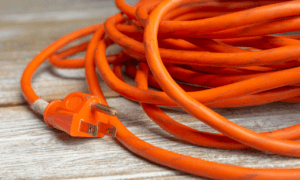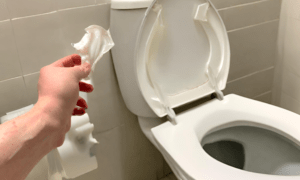Introduction
Understanding the Unintended Water Mishap: How It Happens and Its Impact
Accidentally leaving the hose on for an extended period is a surprisingly common household mishap. It can happen to anyone, but it’s essential to grasp why it occurs and its potential consequences. Typically, it stems from forgetfulness or distractions during routine outdoor tasks. The impact, however, can be substantial, leading to water damage both inside and outside your home.
The Importance of Timely Action After Accidental Hose Overflows
Acting swiftly is crucial when you discover that the hose has been left running for an extended period. Inaction can exacerbate the damage and lead to costly repairs. This article will guide you through the necessary steps to assess, mitigate, and recover from the consequences of this unintentional water mishap.

Assessing the Damage
Identifying the Scope of the Problem: Water Damage Inside and Outside
The first step in dealing with the aftermath of an accidental hose overflow is assessing the damage. You need to determine the extent of the problem, both indoors and outdoors. Inside your home, water damage can affect flooring, walls, and even furniture. Outdoors, your landscaping may suffer, leading to soil erosion and drowned plants.
Inspecting the Affected Areas: Floors, Walls, and Landscaping
A thorough inspection is essential to understanding the full scope of the damage. Indoors, check for waterlogged carpets, warped flooring, and water stains on walls. Outdoors, pay attention to puddles, mudslides, and signs of soil erosion. This evaluation will help you formulate a plan for effective cleanup and restoration.

Immediate Steps to Mitigate Water Damage
Turning Off the Hose and Isolating the Water Supply
Upon discovering the hose mishap, your first action should be to turn off the hose and isolate the water supply. This will prevent further water flow and potential damage. Ensure that the hose bib is tightly closed to stop any leakage.
Removing Excess Water: Tips for Efficient Cleanup
Next, focus on removing excess water promptly. Use towels, mops, or a wet or dry vacuum to soak up standing water indoors. Outdoors, consider using a sump pump or simply allowing time for natural drainage. The faster you remove excess water, the lower the risk of mold growth and structural damage.

Dealing with Indoor Water Damage
Salvaging Flooring, Drywall, and Furniture
Indoor water damage can wreak havoc on your home’s interior. Salvaging affected flooring, drywall, and furniture is crucial. Depending on the severity of the damage, you may need to remove and replace sections of flooring or drywall. For furniture, prompt drying and upholstery cleaning can often prevent permanent harm.
Mold Prevention: Drying and Ventilation Strategies
Mold is a common concern after water damage. To prevent its growth, prioritize thorough drying and proper ventilation. Use dehumidifiers and fans to speed up the drying process. Open windows and doors to facilitate air circulation. Mold prevention is essential for maintaining indoor air quality and your family’s health.

Addressing Outdoor Consequences
Reviving Drowned Plants and Lawns
Outdoor landscaping can also suffer from prolonged hose exposure. Reviving drowned plants and lawns is possible with proper care. Gently remove excess water from plant roots and improve drainage. For lawns, aerate the soil to enhance water absorption. With the right attention, your outdoor greenery can recover.
Preventing Soil Erosion and Grading Solutions
Soil erosion is a potential consequence of outdoor water mishaps. To prevent further erosion, consider grading solutions and landscape modifications. Replanting grass, installing erosion control measures, and redirecting water flow can help stabilize the soil and protect your property from erosion-related damage.

Seeking Professional Help
When to Call in Experts: Restoration Specialists and Landscapers
In some cases, the damage may be beyond your ability to address effectively. Knowing when to call in experts, such as restoration specialists and landscapers, is crucial. They have the expertise and equipment to assess and repair extensive damage, ensuring your home and property are restored to their former condition.
Evaluating Insurance Coverage for Water Damage
Don’t forget to check your insurance coverage for water damage. Depending on your policy, some or all of the repair costs may be covered. Contact your insurance provider promptly to initiate the claim process. This can significantly alleviate the financial burden of restoration.

Preventing Future Mishaps
Installing Automatic Shutoff Systems
Preventing future hose mishaps involves proactive measures. Consider installing automatic shutoff systems for your outdoor faucets. These devices can be programmed to turn off the water after a set time, reducing the risk of accidental overflows.
Developing a Routine Hose Usage Checklist
Establishing a routine checklist for hose usage can help prevent future accidents. Include items like turning off the hose after use, setting timers, and ensuring proper hose connections. Consistency in following this checklist will become a habit that minimizes the likelihood of similar mishaps.

Budget-Friendly DIY Solutions
When it comes to dealing with various home-related issues, from minor water damage repairs to reviving your outdoor spaces on a budget, do-it-yourself (DIY) solutions can be a cost-effective and rewarding approach. In this chapter, we’ll provide you with practical DIY tips and ideas to tackle common problems without draining your wallet.
DIY Water Damage Repair Tips
Water damage in your home can range from minor to severe, and while major issues often require professional help, there are plenty of situations where a DIY approach can save you money and hassle. Here are some DIY water damage repair tips:
- Small Drywall Patches: For minor wall damage, such as small holes or cracks, you can easily patch them up yourself. All you need is some drywall compound, a putty knife, sandpaper, and a bit of patience. Sand, apply, and sand again until the damaged area is smooth and ready for paint.
- Simple Floor Repairs: If you have hardwood floors with minor water damage or scratches, you can sand and refinish them on your own. For laminate or vinyl flooring, you can often replace damaged sections without having to redo the entire floor.
- Leaking Faucets and Pipes: Fixing a leaky faucet or pipe is often a DIY-friendly task. Identify the source of the leak and replace the faulty parts, like washers or seals. There are numerous online tutorials to guide you through the process.
- Ceiling Stains: Water stains on your ceiling can be unsightly. After addressing the source of the leak, you can paint over the stain with a stain-blocking primer and ceiling paint to make it disappear.
- Mold Removal: For small mold problems, you can mix a solution of water and white vinegar or hydrogen peroxide to clean the affected area. Be sure to wear protective gear and ensure proper ventilation while working on mold removal.
Remember that while these DIY repairs can save you money, it’s essential to know your limits. If the damage is extensive or involves electrical or structural issues, it’s best to consult a professional.
Low-Cost Landscaping Restoration Ideas
Reviving your outdoor spaces on a budget can be a satisfying and creative endeavor. Here are some low-cost landscaping restoration ideas to transform your garden and yard without a hefty price tag:
- DIY Plant Propagation: Instead of purchasing new plants, propagate your existing ones. Many plants, such as succulents and some shrubs, can be easily propagated from cuttings. This not only saves money but also allows you to expand your garden with familiar favorites.
- Creative Reuse of Materials: Repurpose materials you already have or source low-cost items to enhance your outdoor space. Old pallets can become garden furniture, and leftover bricks or stones can create charming pathways or borders.
- Start from Seeds: Growing plants from seeds is far more budget-friendly than buying mature plants. You can start seeds indoors and transplant them into your garden when they are ready.
- Mulch and Compost: Applying mulch to your garden not only improves aesthetics but also helps retain moisture and suppress weeds. Composting kitchen scraps and yard waste can provide nutrient-rich soil for your plants, reducing the need for store-bought fertilizers.
- Community Plant Swaps: Participate in local plant swaps or community gardening events. These gatherings often allow you to exchange plants and gardening tips with fellow enthusiasts, all while diversifying your garden at no cost.
By embracing these DIY water damage repair and budget-friendly landscaping ideas, you can take a hands-on approach to improving your home’s condition and outdoor spaces while keeping your expenses in check. Whether you’re a seasoned DIYer or just starting, these tips will help you save money while making your living space more comfortable and beautiful.
Conclusion
The Road to Recovery After Accidentally Leaving the Hose On
Dealing with the consequences of accidentally leaving the hose on for an extended period can be challenging, but with swift action and the right strategies, you can recover and even improve your home and outdoor space. By assessing the damage, taking immediate steps, seeking professional help when needed, and implementing preventive measures, you can navigate this unexpected situation with confidence.
A More Resilient and Informed Homeowner: Lessons for the Future
While plumbing accidents are unfortunate, they can also empower you to become a more informed and proactive homeowner. By learning from the experience and implementing preventive measures, you can reduce the risk of future mishaps and enjoy a home that’s better prepared to handle unexpected challenges.
For a comprehensive guide on addressing house shaking issues, don’t miss my article “What is House Shaking: How to Deal.”















